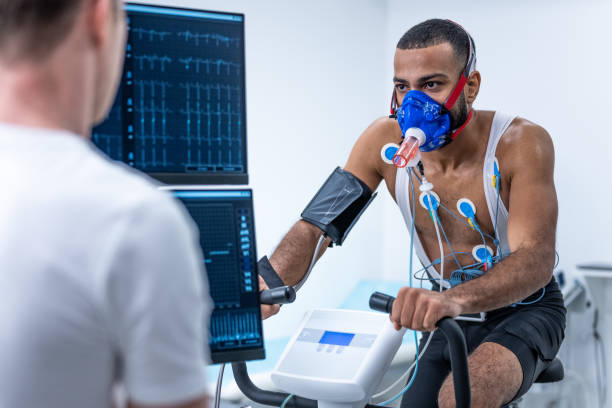Fit Testing: A Critical Component of Respiratory Protection

Fit testing is an essential procedure in various industries where employees are exposed to hazardous airborne contaminants. The effectiveness of respiratory protection hinges on the ability of respirators to form a proper seal around the wearer’s face. This article explores the concept of fit testing, its importance, the different methods involved, regulatory requirements, best practices, challenges faced, and future trends in fit testing.
Understanding Fit Testing
Fit testing is a process designed to ensure that a respirator effectively seals against the user’s face. A proper fit is critical for respiratory protection; fit testing, the respirator cannot perform its intended function of filtering out harmful substances. Fit testing is typically conducted before employees use respirators in the workplace and is a legal requirement in many countries.
The Importance of Fit Testing
Fit testing is crucial for several reasons:
Worker Safety: The primary purpose of fit testing is to protect employees from inhaling harmful airborne contaminants. Without a proper seal, respirators can allow dangerous substances to enter, posing significant health risks.
Regulatory Compliance: Various regulations, such as the Occupational Safety and Health Administration (OSHA) standards in the U.S., mandate fit testing as part of a comprehensive respiratory protection program. Compliance with these regulations is essential for avoiding legal liabilities and ensuring workplace safety.
Enhanced Comfort and Compliance: Properly fitted respirators are generally more comfortable for users. When employees feel comfortable in their protective gear, they are more likely to comply with safety protocols and consistently wear their respirators.
Data-Driven Decisions: Fit testing provides critical data that employers can use to select the most appropriate respirators for their workforce. By understanding fit characteristics, organizations can enhance their respiratory protection programs.
Methods of Fit Testing
Fit testing can be categorized into two primary types: qualitative fit testing (QNFT) and quantitative fit testing (QNFT). Each method has its advantages and limitations, making it essential for employers to understand which is most suitable for their needs.
Qualitative Fit Testing (QNFT)
Qualitative fit testing is a subjective method that assesses the user’s ability to detect a test agent while wearing the respirator. This method relies on the wearer’s sensory perception of the test agent, which could be a taste or odor.
Common Qualitative Fit Test Agents
Bitrex (denatonium benzoate): A bitter-tasting substance often used for testing.
Saccharin: A sweet-tasting agent that can be used for testing in specific protocols.
Advantages of Qualitative Fit Testing
Simplicity: QNFT is relatively easy to perform and requires minimal equipment.
Immediate Results: Users can receive immediate feedback on whether their respirator fits correctly.
Disadvantages of Qualitative Fit Testing
Subjectivity: The method relies on individual sensory perception, leading to potential inconsistencies in results.
Limited Data: Qualitative fit testing does not provide detailed numerical data about the effectiveness of the respirator fit.
Quantitative Fit Testing (QNFT)
Quantitative fit testing employs specialized equipment to objectively measure the fit of a respirator. This method quantifies the fit by comparing the concentration of the test agent inside the respirator to the concentration outside.
Common Equipment for Quantitative Fit Testing
Fit Testing Machines: Devices designed to measure ambient concentration and calculate a fit factor, providing a numerical representation of the fit quality.
Advantages of Quantitative Fit Testing
Objective Measurements: QNFT provides numerical data regarding fit quality, allowing for better analysis and comparisons.
Detailed Analysis: This method offers comprehensive insights into the effectiveness of the respirator fit.
Disadvantages of Quantitative Fit Testing
Complexity: QNFT requires specialized equipment and trained personnel to administer the tests effectively.
Time-Consuming: The testing process can be more prolonged compared to qualitative methods.
The Fit Testing Process
Implementing an effective fit testing process involves several critical steps:
Step 1: Preparation
Preparation is vital for successful fit testing. This includes:
Selecting a Suitable Location: Choose a clean, controlled environment free from distractions and potential contaminants.
User Readiness: Inform users not to eat, drink, smoke, or chew gum for at least 30 minutes before the test.
Educating the User: Provide clear information about the fit testing process and its importance.
Step 2: Respirator Inspection
Before fit testing, inspect the respirator for any damage or wear. Ensure that it is clean, functioning properly, and that the correct size is available for the user.
Step 3: Selecting the Right Respirator
Assist users in selecting the appropriate model and size of the respirator. A snug and comfortable fit is essential for effective respiratory protection.
Step 4: Conducting the Fit Test
Qualitative Fit Testing:
The user wears the respirator and is exposed to the test agent while performing a series of movements (e.g., turning their head, talking, bending over).
If the user can detect the test agent during these movements, it indicates an inadequate fit.
Quantitative Fit Testing:
The user wears the respirator while the fit testing machine measures the concentration of the test agent inside and outside the mask.
A fit factor is calculated based on the difference in concentrations, with a higher fit factor indicating a better seal.
Step 5: Documentation
Document the results of the fit test, including:
The type of test conducted (qualitative or quantitative).
The model and size of the respirator used.
The fit factor or pass/fail result.
Any observations or notes related to the fit test.
Step 6: Follow-Up
Provide feedback based on the fit test results. If a respirator fails the test, recommend alternative models or sizes and retest after adjustments have been made.
Regulatory Requirements
Fit testing is subject to various regulations aimed at ensuring workplace safety. In the United States, OSHA’s Respiratory Protection Standard (29 CFR 1910.134) outlines specific requirements for fit testing:
Frequency of Fit Testing
Fit testing must be conducted before any employee uses a respirator in the workplace.
Retesting is required at least annually or whenever significant changes occur in the user’s physical condition (e.g., weight changes, dental work, or facial surgery).
Recordkeeping
Employers must maintain records of fit test results, including the date of the test, the individual tested, and the results. These records should be readily accessible for compliance verification.
Training Requirements
Employers must provide training on the proper use of respirators, including how to conduct a user seal check before each use. Employees should understand the importance of fit testing and the potential consequences of improper fit.
Best Practices for Fit Testing
To ensure effective fit testing in the workplace, consider implementing the following best practices:
1. Schedule Regular Fit Tests
Conduct fit tests regularly to maintain compliance and ensure ongoing protection. Schedule tests at least annually or whenever significant changes occur in the user’s physical condition or respirator type.
2. Educate Employees
Provide comprehensive training to employees on the importance of fit testing and proper respirator use. Educated employees are more likely to comply with safety protocols.
Involve Employees in the Process
Engage employees in the fit testing process by allowing them to actively participate. This may include selecting their respirator model or size and providing feedback on comfort and fit during testing.
Utilize Qualified Personnel
Ensure that fit tests are conducted by trained personnel familiar with the procedures and equipment used. This will help ensure accuracy and reliability in the testing process.
Maintain Equipment
Regularly inspect and maintain fit testing equipment to ensure accurate results. Follow the manufacturer’s guidelines for calibration and maintenance.
Common Challenges in Fit Testing
Despite its importance, fit testing can encounter several challenges. Here are some common issues and potential solutions:
1. Employee Resistance
Some employees may resist wearing respirators or participating in fit testing due to discomfort or a lack of understanding of its importance.
Solution: Address concerns by providing education on the risks of exposure to airborne contaminants and the importance of fit testing. Ensure that respirators are comfortable and appropriately sized.
2. Time Constraints
Conducting fit testing can be time-consuming, especially in larger organizations with many employees.
Solution: Schedule fit tests during regular training sessions or safety meetings to minimize disruption. Consider using a qualified third-party provider to conduct fit testing efficiently.
3. Variability in Fit
Factors such as facial hair, glasses, and weight fluctuations can affect the fit of respirators.
Solution: Educate employees on the importance of maintaining a clean-shaven face for a proper seal or using alternative respirator options for those with facial hair. Provide solutions for employees who wear glasses, such as glasses-friendly respirators.
Seasonal Changes
Changes in temperature and humidity can affect how a respirator fits, leading to inconsistencies in fit testing results.
Solution: Encourage regular fit testing, especially during seasonal transitions when temperature and humidity levels fluctuate.
Future Trends in Fit Testing
As industries evolve and new technologies emerge, the future of fit testing is likely to see significant advancements. Here are some trends to watch:
Technological Integration
Emerging technologies, such as virtual reality (VR) and artificial intelligence (AI), could revolutionize fit testing. VR simulations could allow for more realistic assessments of respirator fit, while AI could analyze fit data to recommend optimal respirators for users.
Improved Training Methods
Interactive training programs that incorporate gamification and simulations can enhance employee understanding and retention of fit testing protocols.
Focus on Personalization
The future of fit testing may include more personalized approaches, where respirators are tailored to individual users based on facial scans or measurements, ensuring a better fit.
Expansion of Regulations
As awareness of respiratory hazards grows, regulatory agencies may introduce more stringent fit testing requirements, emphasizing the importance of fit for various industries.
Conclusion
Fit testing is a critical component of respiratory protection programs in workplaces where employees are exposed to harmful airborne contaminants. By ensuring that respirators fit correctly, employers can protect their workers’ health, comply with regulatory requirements, and foster a culture of safety. Implementing effective fit testing practices involves understanding the importance of fit testing, selecting appropriate methods, adhering to regulations, and addressing challenges proactively.
As technology continues to advance, the future of fit testing holds great promise for enhancing worker safety and health outcomes. Prioritizing fit testing is not just a legal obligation; it is a commitment to the well-being of employees, contributing to a safer and more productive workplace. Through continuous education, training, and evaluation, organizations can ensure that their respiratory protection programs are effective, compliant, and focused on the health and safety of their workforce.




